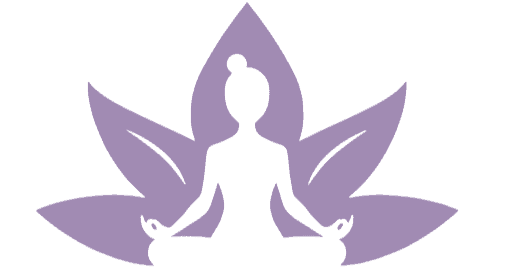If you practice yoga regularly, you have probably already come across the word “Mula Bandha”, but what is it, where do you find it and how do you apply it in your yoga practice? Do you even need it?
What is Mula Bandha?
The Sanskrit word ‘Mula’ can be translated into the root of a plant or base. The word ‘bandha’ can be translated into english as a lock. Therefore Mula bandha is also referred to as ‘the root lock’. This root lock is found in the root chakra or Muladhara chakra, in the pelvic floor region.
We have four bandhas in our bodies all with the purpose to direct the flow of our life energy (Prana). By engaging the bandhas in our body we temporarily can ‘lock’ this energy in a specific part of our body. This helps to prevent the loss of essential energy that is needed in that particular region. Once you release the lock it also has the benefit of letting prana flow more efficiently resulting in more vitality where it is needed.
Mula Bandha specifically keeps this life energy flowing up rather than out of the body when it is engaged.
When do we use Mula Bandha?
Mula Bandha can be used during pranayama to control the flow of breath, aswell as during your yoga session to control the flow of energy, making your practice more efficient.
You can also engage your Mula Bandha during meditation.
Mula Bandha is also engaged during prenatal exercises that involve Kegel exercises. As Kegel exercises involve you contracting and relaxing your pelvic floor, you automatically also engage your root lock. This brings us to the following question:
How do you practice Mula Bandha?
You can engage your Mula bandha, wherever and whenever and you do not have to make it a separate exercise. However, in order for you to engage Mula bandha during your workouts, yoga practice, pranayama or mediation, you need to know how and where to do what exactly. Therefore you can practice engaging your Mula bandha with the help of the steps below on its own first.
Practicing Mula Bandha
- Sit on a chair, in an upright position.
- Elongate your spine, and relax your shoulder and jaw muscles.
- Close your eyes and take a couple of deep breaths to bring awareness to your body.
- On your next inhale try to contract your pelvic floor muscles, by imagining pulling your pelvic floor muscles up and inwards.
- Hold for 5 seconds and then release with an exhale and relax for 3 seconds.
- On your next inhale try to contract your pelvic muscles by imagining pulling your sits bones together.
- Hold for 5 seconds and release with an exhale.
- Once you feel confident doing both you can try to combine both of these Kegel exercises together: Pulling the pelvic floor up and the sits bones together.
It is important to know that engaging your Mula bandha is not a forceful strong contraction of your pelvic floor but rather a gentle lift of the area between your anus and your genital area, called your perineum. You should be able to hold this gentle lift comfortably and not with force.
Engaging Mula Bandha during your Yoga Practice

The Kegel exercise will give you better awareness of how to engage your Mula bandha. Now you can start applying it during your practice.
When you engage your Mula bandha, you can feel how your perineum lifts up, your belly gently pulling to the spine and your lower back gently being pulled towards your belly button, which can give you the feeling of being more together.
It also activates your core strength and gives yoga asanas more stability. If you for example apply your Mula bandha in tree pose or warrior III you will feel more stable and balanced in your pose.
Transitions, like jumping from downward-facing dog to standing forward fold will also be much easier as you will feel lighter and at the same time stronger. This also applies to hand-balances, like flying crow pose.
All in all engaging Mula bandha throughout your practice will improve your general yoga practice.
Applying Mula Bandha in Pranayama

Applying Mula Bandha with your pranayama has the benefit of keeping valuable energy inside and controlling the flow of your prana in your body.
- Sit in a comfortable position, with your spine elongated, and close your eyes.
- Take a deep couple of breaths and on your last exhale sigh out your breath through your mouth completely.
- On your next inhale gently activate your Mula bandha by lifting your perineum up and pulling your belly button to the spine and your lower back towards your belly. Do not force this contraction, it is a small and subtle movement.
- Hold this contraction and breath for a couple of seconds.
- Exhale and release your Mula bandha.
- Repeat for 5-8 breaths.
- After you practice take a couple of normal breaths with your eyes still closed.
Applying Mula Bandha during a Meditation

When I was in childbirth preparation classes I really enjoyed practicing Mula bandha with guided meditations.
You can for instance listen to the sounds of the ocean, and imagine sitting on a beach looking at the waves building up and eventually breaking.
Now you can combine the waves with your breathing and your Mula bandha activation.
When the wave builds up, take a deep inhalation whilst gently lifting your Mula bandha, when the wave is breaking release your Mula bandha and exhale completely.
Now imagine that these waves cleanse your body from impurities, negative thoughts, fear, etc. By inhaling and applying Mula bandha the waves build up and collect all the impurities that you want to get rid of, and by your exhale release Mula bandha and let the wave break, to wash it all out.
Benefits of applying Mula Bandha
The benefits that Mula bandha has on you are plenty. It has physical and energetic benefits.
Physical Benefits:
- Strengthens the core
- Energizes the body and increases vitality
- As you engage your pelvic floor you can protect your lower back better during asanas
- Improves concentration
- Regulates menstrual cycle in women
- Reduces heart rate
- Helps to prevent incontinence or aids to improve bladder control
- Reduces blood pressure
- Aids in digestion
- Strengthening your pelvic floor after childbirth
- Improving the health of the female reproductive system
- Helps to quiet the mind and therefore can improve your meditation practice
- It can help people suffering from hemorrhoids
- Relieves back pain
Energetic Benefits:

By applying Mula bandha, the root lock, you energize Muladhara, the root chakra. Thus providing you with the following benefits:
- Personal growth
- Inner stability
- Grounding you
Contraindications of practicing Mula Bandha
Even though practicing Mula Bandha comes with lots of benefits it should be practiced properly. If you struggle to apply it or do not know if you engage the right muscles, you should practice with a certified yoga instructor first, till you get the hang of it, and before practicing on your own, as you can harm yourself when doing it incorrectly.
One example of incorrect Mula Bandha practice is to hold your breath and restrain it by force whilst doing strenuous exercises.
Other contraindications are:
- If you recently had a neck or back surgery you should avoid practicing Mula bandha.
- Do not practice Mula bandha if you suffer from chronic headaches or migraines.
- Avoid engaging Mula bandha right after you enjoyed a heavy meal.
- Do not practice Mula bandha if you have chronic heart disease.
Final Thought
The whole purpose of practicing Mula Bandha is to connect your body and mind together completely by controlling prana. It helps you to keep stability and balance in your asanas aswell as preventing life energy to get lost during pranayama and mediation.
Even though it takes a lot of practice to be able to do Mula bandha, and it might sometimes feel tiring to constantly think of applying it, I advise you to stay at it. Soon you will apply Mula bandha without big effort and you will benefit from all its health advantages.
“Even an old person becomes young by constantly practicing Mula Bandha” – Hatha Yoga Pradipika
FAQ’s
What does Mula Bandha do?
Looking at Mula Bandha from a simple anatomic view, you benefit from Mula Bandha because you engage and activate the diamond shape pelvic muscle group, which results in toning and strengthening of the pelvic floor, and therefore improves your posture, increases balance and stability, and increases your overall core strength.
However, looking at it further, from a more yogic point of view the benefits of Mula bandha are so much more than just muscle strength.
By controlling the flow of your prana (life energy) you can eventually master drawing up your Shakti Kundalini energy into the Shushumna Nadi, which then again activates your central nervous system.
Another benefit of activating your Mula bandha and drawing up your Shakti Kundalini energy is, that it helps to heal the lower chakras: Mulahadara chakra, Svadisthana chakra, and Manipura chakra.
How do I activate my Mula Bandha?
It is important to first practice awareness of your pelvic floor. You can achieve this by practicing some Kegel exercises.
Only after that, you will begin to notice that activating your Mula bandha is not really a big strong muscle contraction, but rather a gentle lift.
To practice the correct gentle Mula bandha activation you can practice the following three exercises:
- Ashwini Mudra: Contract the muscles of your anal sphincter, by imagining to stop pooping.
- Vajroli Mudra: Contract the urethra, by imagining to stop your flow of pee.
- Finally, Mula Bandha: gently lifting the space in between your genitals and anus, called the perineum, by imagining an elevator moving up.
What are the benefits of Mula Bandha?
- Relieves menstrual cramps in women
- Lowers blood pressure levels
- Reliefs respiratory problems
- Aids in digestion
- Raises self-awareness
- Unites root and heart chakra energies, which results in calmness
- Improves posture and reliefs back pain
- Improves stability and balance as it strengthens your core
- It boosts self-confidence
- It lets you connect to your divine power
What muscles are used in Mula Bandha?
Mula Bandha is located in the pelvic floor muscles. A muscle group that looks like a diamond and expands from the pubic bones, between the two sits bones at the sides and the coccyx in the back.
The main muscles that form this “hammock”, that hold up your internal organs and support your posture are:
The levator ani group and the coccygeus group.
